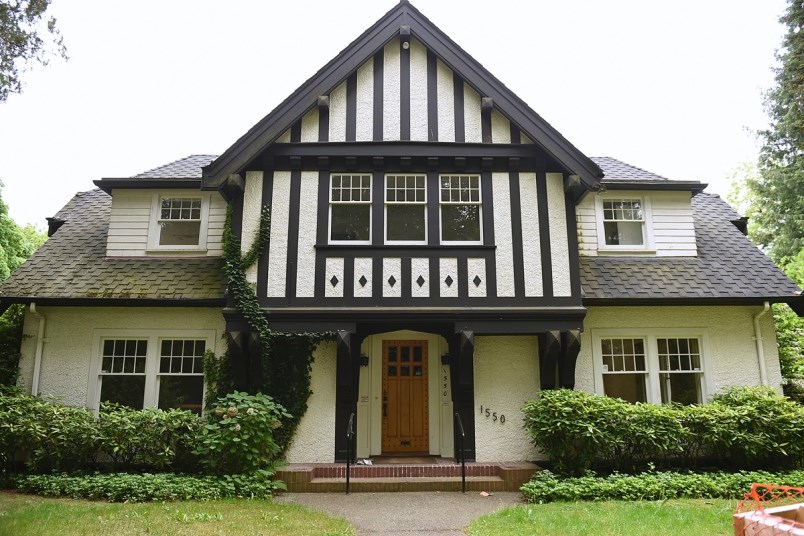The so-called “Electric Home” at 1550 West 29th St. may be protected for another four months if council approves a staff recommendation being presented May 31.
On May 12, the city issued a heritage protection order, which is in effect for 30 days, to determine if the Tudor-style house merits conservation. The current owners want to demolish it and replace it with a two-storey home and garage with four parking spaces.
Vancouver architecture firm Townley and Matheson designed the heritage house, which was built in 1922. It was used as a show home to demonstrate how a house could be wired for electricity.
After conducting an initial investigation, city staff want an additional 120 days of protection for the house, beyond May 31, to allow time for a statement of significance to be produced, which would be reviewed by the Vancouver Heritage Commission, to complete a heritage evaluation and to consider the feasibility of retaining the house. The city would cover the cost of the investigation and staff would report back to council before the 120-day period expired.
The current owners and their designer first met with city staff about their plans for the property on June 10, 2013, which was before council approved the Heritage Action Plan (HAP).
Staff told them they could pursue their application, since their inquiry pre-dated the HAP, as long as no objections were raised during the neighbourhood notification period.
The city sent notices about the application to 60 neighbours, but no one responded during the period between Feb. 24 and March 10, 2015. Conditional approval of the application was granted April 15, 2015.
Almost a year later, in March 2016, residents started emailing the city to oppose the demolition plan, igniting media interest in a story that spread widely. The city had not granted a demolition permit at this point.
Staff met with the owners about the possibility of retaining the house, but the owners decided they still wanted to knock it down and build a new home. (The house had been listed for sale but is no longer listed.)
Jane Pickering, the city’s director of planning, said it’s “unfortunate” the owners had gotten so far in the process.
“On the initial notification that we did to the neighbourhood, we had no response. It was only as the process continued to go on that we started to get a lot of public outcry and did a lot more investigation on exactly what went on,” she told the Courier. “When it [came] to my attention, I said, ‘Well, let’s just stop a minute.’ It’s unfortunate they went that far down the road, but it still doesn’t preclude the fact that this could be a very valuable asset. So now we just need to study it further.”
According to the city report, much of the original materials, detailing and features on the house’s exterior and interior are intact, including stucco and half-timber detailing, heavy brackets, original wood windows, the entry door, the wood-panelled entry hall, wood stair rail and balusters, wood floors with inlays, several fire places, decorative ceiling details with plaster mouldings, and tiling in the bathrooms.
The preliminary report also notes the house’s historical and cultural value — that fact Townley and Matheson built it and that it was named the model “Electric Home.”
Pickering said if council approves staff’s recommendation next week, the Statement of Significance will go into much more detail about the heritage qualities of the house. It’s too early to say what the options for retention might be.
“It could be the addition of some more square footage somewhere for the house itself, done in a sensitive way. Largely, it means infill. So whatever we can do that might give an incentive to keep the house, we would do our best to do that,” Pickering said.
@naoibh



